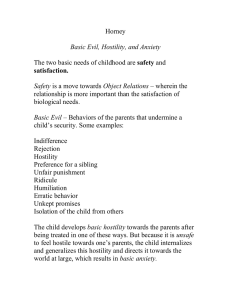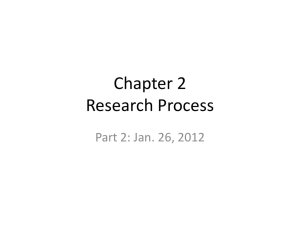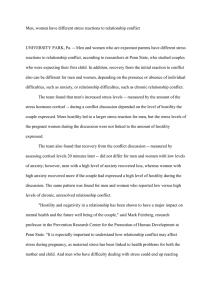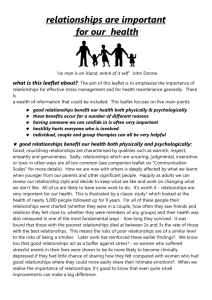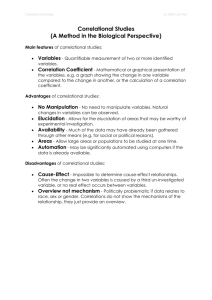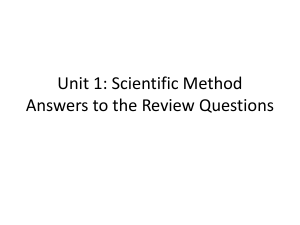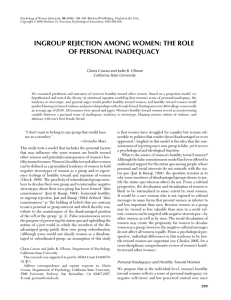Psyc. 325 Social Psychology
advertisement
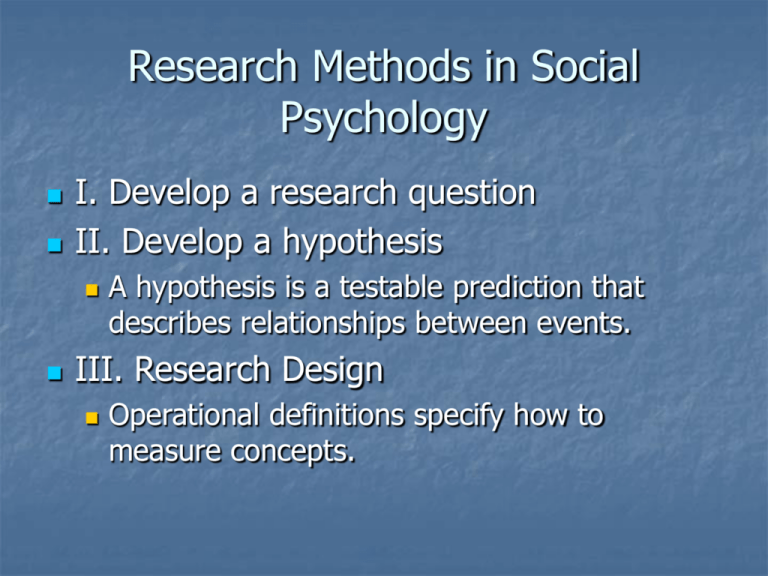
Research Methods in Social Psychology I. Develop a research question II. Develop a hypothesis A hypothesis is a testable prediction that describes relationships between events. III. Research Design Operational definitions specify how to measure concepts. Research Methods in Social Psychology (cont.) A. Correlational Research Designs Correlation involves assessing the relationship between two or more variables Correlation coefficient ranges from -1 to +1 Number gives the strength of the relationship Sign gives the direction of the relationship Interpreting correlational results: Correlation does not imply causation! Two problems in establishing cause-effect: Directionality problem – Does A cause B or does B cause A? Third variable problem – C may cause both A and B Evaluating Research Internal Validity: the degree to which a research finding provides clear or compelling information about causality. External validity: the degree to which a research finding provides an accurate description of what typically happens in the real world. Evaluating Research (cont.) To increase the external validity of a laboratory study, increase: Mundane realism: degree to which the experimental conditions resemble real-world situations. AND/OR Experimental realism: degree to which the experimental conditions are psychologically engaging. Experimental Research Studies that seek to establish cause-effect relationships by manipulating one or more factors while holding others constant. Independent variable (IV) – the variable that is manipulated by the experimenter. Experimental group – treatment Control group – no treatment Dependent variable (DV) – the variable that is measured as an outcome. Experimental Research (cont.) Two essential ingredients of an experiment: Random assignment – each participant has an equal chance of being in the experimental group or the control group Holding the other variables constant – the only difference between groups should be the manipulated variable: Everything else must be held constant Factorial Design A design in which the levels of 2 or more independent variables are completely crossed. Main effect A statistical term meaning that, overall, an independent variable has an effect on a dependent variable. Interaction A statistical term meaning that the effects of one independent variable on a dependent variable depend on the level of another independent variable. The effects of _____ on _______ depend on ______. Taunting No Taunting High Skill 8 7 8 8 M=8 Low Skill 4 6 M=5 M=6 6 Taunting 5 4 3 No Taunting 2 1 0 High Skill Low Skill M=7 Violent Game Non-violent game High hostility 6 4 M=5 Low hostility 2 4 M=3 M=4 M=4 6 5 4 Violent Non-violent 3 2 1 0 High Hostility Low Hostility Violent Game Non-violent Game High hostility 7.5 6.5 M=7 Low Hostility 6.5 5.5 M=6 M=7 M=6 8 7 6 5 Violent Non Violent 4 3 2 1 0 High Hostility Low Hostility Ethics 1. Deception is allowed, but the benefits of the research must outweigh the costs. 2. If deception is used, participants must be promptly debriefed at the end of the experiment. 3. Researchers must obtain informed consent. Participants are to be informed of any risks of benefits of participating in the study and that they may withdraw at any time without penalty. 4. Researchers must ensure the confidentiality of data.
